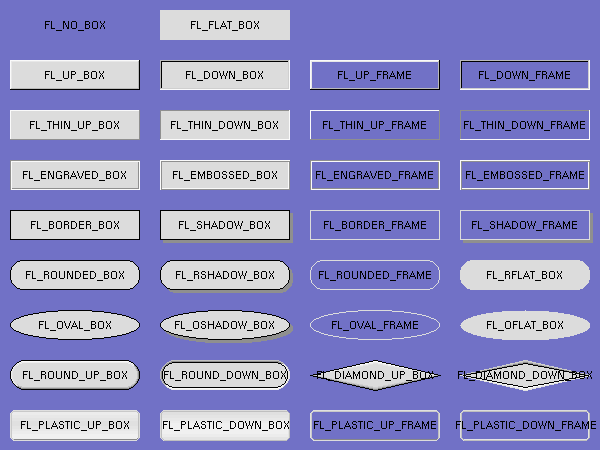More OO Design Background
- Some notes from Booch
- He feels that the following are required for an object oriented approach
- Abstraction
- Encapsulation
- Modularity
- Hierarchy
- Abstraction (Page 100 of your book, read it)
- Booch quotes several people.
- M. Shaw
- "A simplified description, or specification, of a system that emphasizes some of the system's details or properties while suppressing others"
- "A good abstraction is one that emphasizes details significant to the reader or user and suppresses details that are, at least at the moment, immaterial or diversionary"
- Berzins
- "a concept qualifies as an abstraction only if it can be described, understood, and analyzed independently of the mechanism that will eventually be used to realize it."
- Booch gives the following definition
- An abstraction denotes the essential characteristics of an object that distinguish it from all other kinds of objects and thus provide crisply defined conceptual boundaries, relative to the prospective viewer.
- Gregorie uses an example
- Think of a TV.
- We know about the interface (on/off, volume, channel, display, ...)
- It might even have the ability to add components (dvd player, ...)
- But we don't know how the thing works inside.
- The interface and the implementation are separated.
- I don't think this is anything different from the ADT
- For any object, we provide an interface (member functions)
- This interface must provide full manipulative capabilities for the object.
- By the way, they refer to this interface as a "contract".
- It will always be there.
- It will work.
- In chapter 5, (p 138) Gregorie discusses using abstraction in decreasing.
- The interface is the way people use your code.
- The implementation is the way your code works.
- The two should not be mixed.
- How do you decide on an interface
- Access to all internal data should be through the interface.
- Variables (ie the member data, properties, ...) are implementation dependent.
- Build getters and setters (observers and transformers)
- You should not provide direct access.
- You should at least validate the data values.
- Some thoughts on member functions (the public interface, the contract)
- Who are you designing this class for?
- Personal use?
- Team use?
- Public use?
- As you go down the list your freedom decreases
- Private use, it can be flexible, incomplete and changing
- But don't be sloppy
- You may want to use this again in the future.
- And a bad interface means you probably can't
- Public use, the interface needs to be complete and thorough and stable.
- The contract becomes more formal as you move down.
- Gregorie says that this is hard
- Look at what others have done.
- Study the professional libraries.
- Critique interfaces you have used.
- Respond to feedback and adjust your system.
- Encapsulation/Information Hiding
- Booch describes this as a complementary concept to abstraction.
- This is hiding the details of implementation
- The data and data structures
- The algorithms and implementation of algorithms.
- "No part of a complex system should depend on the internal details of any other part."
- Modules
- In some sense this can be boiled down to separate compilation units.
- We want to create units that we can reuse
- It looks like C++ is headed to a better system in C++20
- I can't find a great link.
- But This is a start.
- No include files, perhaps no object files.
- And templates, which we will be tackling later are cleaner.
- Hierarchy
- Booch says
- Abstraction is a good thing, but in all except the most trivial applications, we may find many more different abstractions than we can comprehend at one time.
- Encapsulation helps manage this complexity by hiding the inside view of our abstractions
- Modularity helps also, by giving us a way to cluster logically related abstractions.
- But still this is not enough. A set of abstractions often forms a hierarchy, and by identifying these hierarchies in our design, we greatly simplify our understanding of the problem.
- Hierarchy is a ranking or ordering of abstractions.
- Take a look at The FLTK Toolket Widget documentation.
- I a GUI system, a Widget is an abstraction of something that shows up on the screen.
- In this case, the widget has all the properties and behaviors of something that you can put in a GUI.
- look at size()
- look at show.
- The hierarchy gets a bit hard to look at without a knowledge of a GUI but
- A box is a concrete item. It is just an rectangular item on the screen.
-

- Notice the simplicity, as most functions come from a widget.
- It derives most of it's properties and behaviors from the widget.
- A Button is an abstract thing as well.
